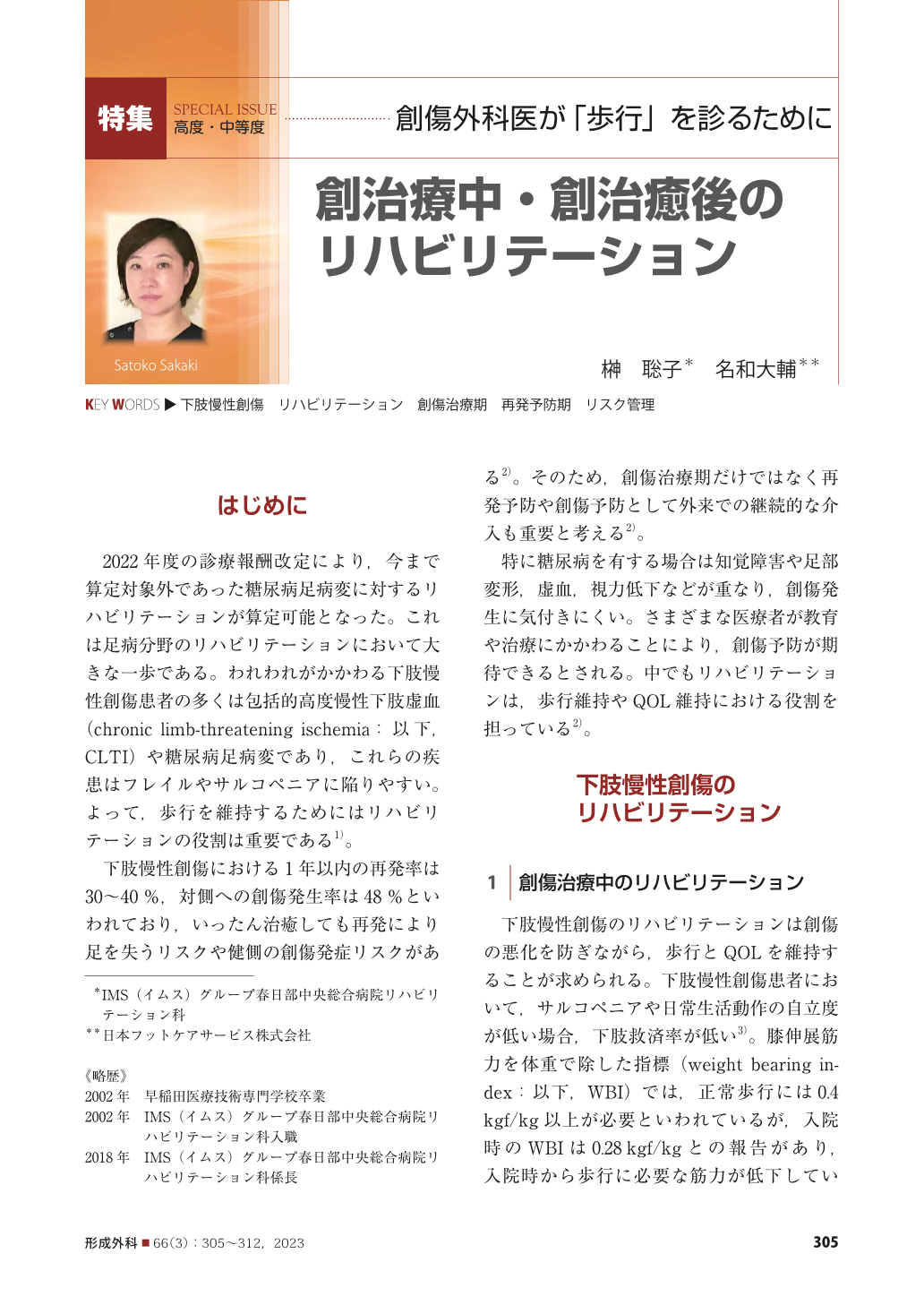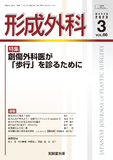Japanese
English
- 有料閲覧
- Abstract 文献概要
- 1ページ目 Look Inside
- 参考文献 Reference
はじめに
2022年度の診療報酬改定により,今まで算定対象外であった糖尿病足病変に対するリハビリテーションが算定可能となった。これは足病分野のリハビリテーションにおいて大きな一歩である。われわれがかかわる下肢慢性創傷患者の多くは包括的高度慢性下肢虚血(chronic limb-threatening ischemia:以下,CLTI)や糖尿病足病変であり,これらの疾患はフレイルやサルコペニアに陥りやすい。よって,歩行を維持するためにはリハビリテーションの役割は重要である 1)。
下肢慢性創傷における1年以内の再発率は30~40 %,対側への創傷発生率は48 %といわれており,いったん治癒しても再発により足を失うリスクや健側の創傷発症リスクがある 2)。そのため,創傷治療期だけではなく再発予防や創傷予防として外来での継続的な介入も重要と考える 2)。
特に糖尿病を有する場合は知覚障害や足部変形,虚血,視力低下などが重なり,創傷発生に気付きにくい。さまざまな医療者が教育や治療にかかわることにより,創傷予防が期待できるとされる。中でもリハビリテーションは,歩行維持やQOL維持における役割を担っている 2)。
Rehabilitation of chronic lower-extremity wounds is frequently required in cases of diabetic foot ulcer and chronic limb-threatening ischemia (CLTI). Patients with these disorders often have sarcopenia or are frail; therefore, early rehabilitation and risk management is important in patients who have a chronic lower-extremity wound. Maintaining muscle strength and off-loading management are imperative for patients with a diabetic foot ulcer and CLTI.
The risk factors for a lower-extremity wound are paresthesia, deformity, ischemia, and plantar pressure abnormalities. Rehabilitation and orthotics can help in wound prevention and in the maintenance of the patient’s ability to walk and quality of life.

Copyright© 2023 KOKUSEIDO CO., LTD. All Rights Reserved.


